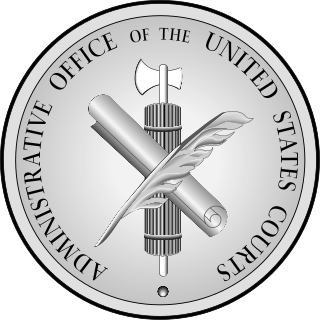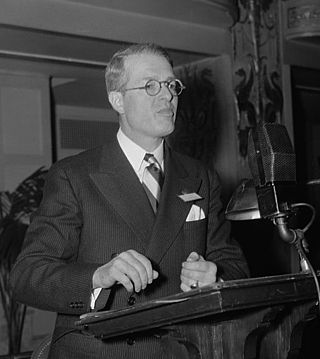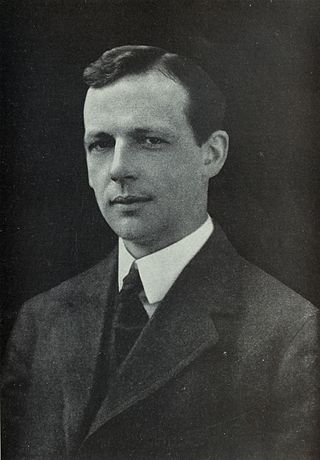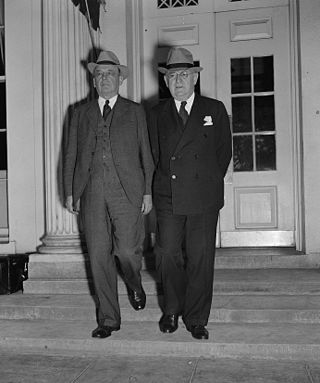
The Cabinet of the United States is the principal official advisory body to the president of the United States. The Cabinet meets with the president in a room adjacent to the Oval Office. The president chairs the meetings but is not formally a member of the Cabinet. The heads of departments, appointed by the president and confirmed by the Senate, are members of the Cabinet, and acting department heads also participate in Cabinet meetings whether or not they have been officially nominated for Senate confirmation. The president may designate heads of other agencies and non-Senate-confirmed members of the Executive Office of the President as members of the Cabinet.

The Executive Office of the President of the United States (EOP) comprises the offices and agencies that support the work of the president at the center of the executive branch of the United States federal government. The office consists of several offices and agencies, such as the White House Office, the National Security Council, and the Office of Management and Budget.
The United States federal executive departments are the principal units of the executive branch of the federal government of the United States. They are analogous to ministries common in parliamentary or semi-presidential systems but they are led by a head of government who is also the head of state. The executive departments are the administrative arms of the president of the United States. There are currently 15 executive departments.
Congressional oversight is oversight by the United States Congress over the executive branch, including the numerous U.S. federal agencies. Congressional oversight includes the review, monitoring, and supervision of federal agencies, programs, activities, and policy implementation. Congress exercises this power largely through its congressional committee system. Oversight also occurs in a wide variety of congressional activities and contexts. These include authorization, appropriations, investigative, and legislative hearings by standing committees; which is specialized investigations by select committees; and reviews and studies by congressional support agencies and staff.

The Administrative Office of the United States Courts, or the Administrative Office (AO) for short, is the administrative agency of the United States federal court system, established in 1939. The central support entity for the federal judicial branch, the AO provides a wide range of legislative, administrative, legal, financial, management, program, and information technology support services to the federal courts.

The Department of Budget and Management is an executive body under the Office of the President of the Philippines. It is responsible for the sound and efficient use of government resources for national development and also as an instrument for the meeting of national socio-economic and political development goals.

Luther Halsey Gulick (1892–1993) was an American political scientist, Eaton Professor of Municipal Science and Administration at Columbia University, and Director of its Institute of Public Administration, known as an expert on public administration.

Charles Edward Merriam Jr. (1874–1953) was an American professor of political science at the University of Chicago, founder of the behavioral approach to political science, a trainer of many graduate students, a prominent intellectual in the Progressive Movement, and an advisor to several US Presidents. Upon his death, The New York Times called him "one of the outstanding political scientists in the country".

The National Economic and Development Authority is an independent cabinet-level agency of the Philippine government responsible for economic development and planning. It is headed by the president of the Philippines as chairman of the NEDA board, with the Secretary of Socioeconomic Planning as vice-chairman. A number of Cabinet members, the Governor of the Bangko Sentral ng Pilipinas, the Chairperson of the Metropolitan Manila Development Authority, the Chief Minister of Bangsamoro, the Secretary of Information and Communications Technology, the Chairman of the Subic–Clark Area Development Corporation, and the National President of the Union of Local Authorities of the Philippines are members of the NEDA Board.
The Hoover Commission, officially named the Commission on Organization of the Executive Branch of the Government, was a body appointed by President Harry S. Truman in 1947 to recommend administrative changes in the Federal Government of the United States. It took its nickname from former President Herbert Hoover, who was appointed by Truman to chair it.

The Federal Security Agency (FSA) was an independent agency of the United States government established in 1939 pursuant to the Reorganization Act of 1939. For a time, the agency oversaw food and drug safety, education funding, administration of public health programs, and the Social Security old-age pension plan.

Louis Brownlow was an American author, political scientist, and consultant in the area of public administration. As chairman of the Committee on Administrative Management in 1937, he co-authored a report which led to passage of the Reorganization Act of 1939 and the creation of the Executive Office of the President. While chairing the Committee on Administrative Management, Brownlow called several of President Franklin D. Roosevelt's advisors men with "a passion for anonymity"—which later became a popular phrase.

The Reorganization Act of 1939, Pub. L.Tooltip Public Law 76–19, 53 Stat. 561, enacted April 3, 1939, is an American Act of Congress which gave the President of the United States the authority to hire additional confidential staff and reorganize the executive branch for two years subject to legislative veto. It was the first major, planned reorganization of the executive branch of the government of the United States since 1787. The Act led to Reorganization Plan No. 1, which created the Executive Office of the President.
The Federal Works Agency (FWA) was an independent agency of the federal government of the United States which administered a number of public construction, building maintenance, and public works relief functions and laws from 1939 to 1949. Along with the Federal Security Agency and Federal Loan Agency, it was one of three catch-all agencies of the federal government pursuant to reorganization plans authorized by the Reorganization Act of 1939, the first major, planned reorganization of the executive branch of the government of the United States since 1787.
POSDCORB is an acronym widely used in the field of management and public administration that reflects the classic view of organizational theory. It appeared most prominently in a 1937 paper by Luther Gulick. However, he first presented the concept in 1935. Initially, POSDCORB was envisioned in an effort to develop public service professionals. In Gulick's own words, the elements are as follows: Planning, Organizing, Staffing, Directing, Co-Ordinating, Reporting and Budgeting.

Frederick Joseph Lawton was an American bureaucrat who served as the ninth Director of the Bureau of the Budget. Lawton was born in Washington, D.C., and became a lawyer and an accountant. He spent most of his professional career working with the government bureaucracy. He helped President Franklin D. Roosevelt wager with members of Congress to support the Fair Labor Standards Act. He first joined the Office of Management and Budget as an executive assistant in 1935. He also served as an adviser to Congress. In 1947, he became an administrative assistant to President Harry S. Truman. He was appointed to the post of Director of the Bureau of the Budget in 1950, and held the position until 1953. President Dwight D. Eisenhower appointed Lawton to a term on the United States Civil Service Commission after he left the Bureau; he served from 1953 to 1963.
The Committee on Department Methods, popularly known as the Keep Commission, was appointed by President Theodore Roosevelt in 1905. The Commission's members were Charles H. Keep, Assistant Secretary of the Treasury and Chairman of the Commission, James R. Garfield, Gifford Pinchot, Frank H. Hitchcock and Lawrence O. Murray. The Commission represented the first assertion by a President that the President is responsible for administration.
The Commission on Economy and Efficiency was a presidential commission appointed by President William Howard Taft between 1910 and 1913 to look at and propose reforms for the United States federal government, particularly the presidential budget. It is also known in government reorganization and reform scholarship as the Taft Commission, however, this is a bit of a misnomer as the Taft Commission originally referred to the Philippine Commission of which Taft was the chairman. The Commission on Economy and Efficiency is most notable for proposing the first budget for the federal government but also is notable for creating the procedure for the President to establish a commission to study administrative reform.
Presidential reorganization authority is a term used to refer to a major statutory power that has sometimes been temporarily extended by the United States Congress to the President of the United States. It permits the president to divide, consolidate, abolish, or create agencies of the U.S. federal government by presidential directive, subject to limited legislative oversight. First granted in 1932, presidential reorganization authority has been extended to nine presidents on 16 separate occasions. As of 2017, it was most recently granted to Ronald Reagan.
The history of the federal government of the United States, including the constitution, the United States Code, the office of the presidency, the executive departments and agencies, Congress, the Supreme Court, and the lower federal courts. It includes government roles, structure, and policy in all aspects, including evolution of the governmental structure, formation of new agencies and departments, assumptions of new roles and functions, enactments of new codes, regulations, and laws, and inception of entirely new roles of government in American society from 1776 to the present day.











